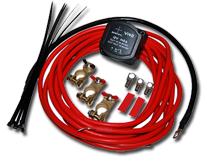Learn How Battery Isolator Works for Your Car

An automotive electrical system produces enough electrical power for an automobile to run the ignition system. Charge the battery again and supply power for electronic devices inside the automobile.
Some automobiles take advantage of this extra electrical capacity to sustain a 2nd onboard battery pack. Typically, a vehicle with more than one battery has a system called a battery isolator set up.
The dual battery isolator system of dfna.info is linked to the vehicle's alternator, which is the device in charge of providing the automobile with electrical power and for charging the vehicle's battery. The dual battery isolator system uses sensors to look for the number of batteries it is linked to and to pull power from the more loaded battery. The inactive batteries are charged by the alternator, and the battery isolator can quickly switch power sources if the battery in use suddenly fails.
Right way to test a battery isolator
Considering that a battery isolator is directly connected to
the vehicle charging kit, it is essential to make sure that the isolator works
accurately at all times. It is crucial to check the voltage at the isolator
terminals while the engine is operating. The following easy steps are common
ones that teach you how to check a battery isolator given by an expert from dfna.info.
1. Link up the black (negative) meter probe to an unpainted element of the automotive frame. Start up the gauge, and set the scale to "Volts DC."
Post Your Ad Here
Comments